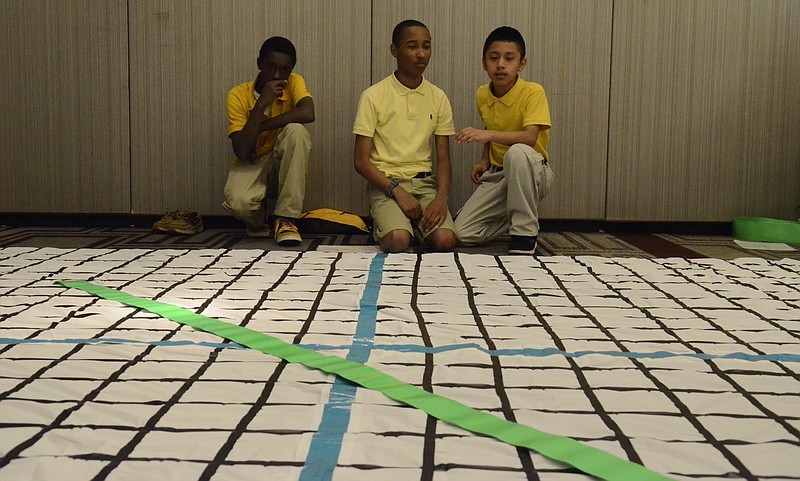When will Hamilton County and its residents get serious about better educating students and helping our children become more job ready?
Students here tested below the state average in nine of the 10 tested categories by as many as 16.7 percentage points, according to the newest TCAP test results released Wednesday by the Tennessee Department of Education. And poor students here are slipping even further behind. TCAP - Tennessee Comprehensive Assessment Program - is given annually to students across the state as a means of tracking progress.
TCAP Hamilton County 2015
See Hamilton County's result in the 2015 Tennessee Comprehensive Assessment Program.
There was a slight bright spot: As bad as those results are, scores show students here made gains over last year's scores in five of 10 areas of testing. But economically disadvantaged students - any student who qualifies for free or reduced-price lunch - continued to earn lower test scores overall.
Hamilton County Assistant Superintendent Robert Sharpe said the scores are slightly better than in 2011.
"We are obviously not where we want to be, but we do feel that we are making progress overall as a district," Sharpe said. " We use these scores to shape future work and the direction we're headed. It's a process."
In just the last year, students in grades 3 through 8 made gains in math. Scores remained flat in science.
But frighteningly, scores in reading and language arts - the building blocks for all other learning - dropped by 2.1 percentage points. Only 44.8 percent of students in Hamilton County public schools are reading at proficient or advanced levels. In short, that means fewer than half of county students have a chance of learning well enough to get good and steady work.
None of this information is new. We've known for years that students from economically disadvantaged homes fall further behind, and that's exactly what Hamilton County's TCAPs show. About 60 percent of Hamilton County public school students live in poverty and qualify for free or reduced lunches. Some 20 percent of all students in Hamilton County attend private schools, and most of those private school students are from the most economically advantaged families - leaving the public schools with the lion's share of disadvantaged children.
The learning gap closed in most subjects for black, Hispanic and Native American students, but local data show that students who come from our disadvantaged homes continued to fall farther behind.
Especially in the younger, most critical years. Nearly 60 percent of county's third-graders read below grade level. The pattern continues, then into later school years: Only 15 percent of local graduates are college-ready and nearly 65 percent of those who graduate high school do not go on to college classes.
The city just over a year ago adopted an extracurricular reading program that helped some students, but not nearly enough. In May, the City Council voted unanimously to expand a $500,000 reading program by $150,000 with the United Way paying $122,000 of that amount. The city also has a Baby University program to help parents in disadvantaged families understand the brain-growing value of reading and talking to infants because 80 percent of a child's brain development occurs by age 3 and 90 percent by age 5.
Meanwhile, the County Mayor failed to include a funding increase of about $34 million - championed by the schools superintendent - in his 2016 budget. And while county commissioners made a money grab for their own discretionary funding, they refused to consider tapping reserve funds for extra money for schools, much less a push for a tax increase for schools.
County Commissioner Tim Boyd, chairman of the education committee, on Wednesday told the Times Free Press that the TCAP scores represent "a failing system."
"If TCAP scores were profit margins, and the profit margin is constantly trending down, you have to make changes," he said. The changes he says he wants would be "cost-effective" solutions to improve test scores, like teachers' pay being directly correlated with their students' performance. He also wants former educators removed from administrative positions with the school district and voted off the school board because he does not think they are business-minded.
We might say the same thing about commissioners who seem to think they pay less for failed students than they would for truly educating them.
Studies show that a student who can't read on grade level by third grade is four times less likely to graduate, and a poor student who cannot read proficiently by third grade is 13 times less likely to graduate on time. National figures show that 86 percent of juvenile offenders are functionally illiterate, and 75 percent of crime is committed by those without a high school education.
Who thinks Chattanooga and Hamilton County can grow and prosper with these statistics?
We get what we pay for and reap what we sow.
